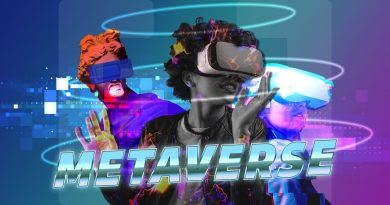The Metaverse- A Digital Playground for Future Generations
As the internet evolves into Web 3.0 and more programmers join forces to contribute and push the boundaries of the metaverse, it is transforming into a playground where virtual representations of the real world are rapidly turning into gold.
This virtual reality world is where people will spend the majority of their time in the future, representing the new wave of change that is here to stay. The term “Metaverse,” coined by science fiction author Neal Stephenson in his 1992 book Snow Crash, is becoming a reality faster than we could have imagined.
The Metaverse, a virtual reality world that is compellingly more immersive than physical reality, is unquestionably where all the action will be in the future as people increasingly connect with one another there.
Holograms will replace items such as digital playground, and virtual assets represented by Non-fungible Tokens (NFTs) will be in high demand as more people around the world invest significant time in creating this alternate reality.
While gamers who have already spent hours playing in the virtual world with their VR headsets can understand this digital playground, others may find it more difficult to comprehend why 2022 is being predicted as the year of the Metaverse gold rush.
Metaverse Is A Powerful Self-Sustaining Enterprise
The crypto space as it currently exists, as well as major advancements that will make the metaverse a powerful self-sustaining business of the future, are required to appreciate the Metaverse’s limitless possibilities.
Because of Blockchain technology, digital playground assets such as cryptocurrencies, stablecoins, and NFTs are assisting business owners and developers in constructing a transactional foundation that can support the metaverse.
Unlike Fiat Currencies, Digital Assets
These digital playground assets have all of the properties of fiat money or other forms of store of value, such as gold, but none of the disadvantages. They offer unprecedented levels of security in the traditional financial sector and can be conducted online without the involvement of centralized authority from any mobile or desktop device.
Because of their widespread use, virtual assets have grown into a multi-trillion dollar asset class used to conduct business in virtual environments such as the metaverse. Virtual assets such as Bitcoin (BTC) are poised to be the preferred currency in the metaverse for the foreseeable future because they provide asset holders with immutable proof of ownership and reward them with returns on investments that are many multiples of their initial investment.
The Metaverse’s Future Potential Is Limitless
Decentraland, a 3D virtual environment designed to encourage social interaction, is a prime example of the metaverse’s value unlocking potential. Users can create virtual worlds using digital objects that are replicas of actual objects and interact with digital avatars of other community members on the platform, which was launched in 2017 and is also accessible from a standard computer.
Everything from a jacket to cars and even real estate is generated and traded on this metaverse-like platform using the native digital token MANA. The site has thousands of users, and the value of its MANA token has increased more than 20 times in the last two years.
A plot of digital land in Decentraland recently sold for a record-breaking US$2.43 million in cryptocurrency, demonstrating the metaverse’s seemingly limitless potential to build an alternate economy much larger than even some physical economies today. This transaction took place in November of 2021.
Companies Jumping On Board
Popular corporations are also jumping on the metaverse bandwagon in some way. Some do this by offering NFTs of their best-selling items, while others invest billions of dollars in researching and developing the technologies that will power the metaverse in the future.
In these virtual environments, NFTs will serve as placeholders for virtual things, while cryptocurrency will serve as the financial basis for all transactions in the metaverse. As investors and collectors alike snap up these digital goods, a new investment strategy is gripping the world and creating riches like no other sector in an unbalanced society.
As the internet evolves into Web 3.0 and more programmers join forces to contribute and push the boundaries of the metaverse, it is transforming into a playground where virtual representations of the real world are rapidly turning into gold.




